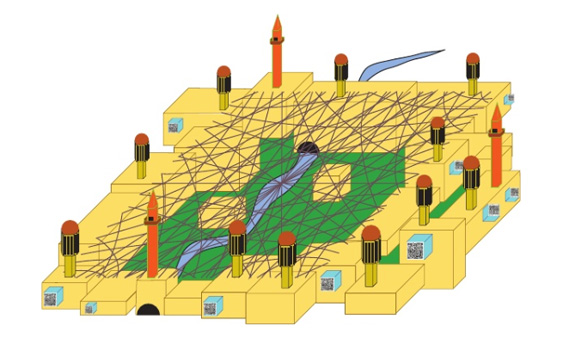Shura City (image: Asher J. Kohn)
As drones become increasingly common tools of war and surveillance on the battlefield and in our cities, how are architects and designers responding? Previously, we’ve looked at personal counter-surveillance measures, but it’s likely that future designers will move beyond the scale of the individual to larger projects such as drone-proof architecture or perhaps even urban-scale counter-surveillance. Concerned about what he sees as the improper or unjustified use of drones, law student Asher J. Kohn has imagined how an anti-drone city might look and function. This isn’t a science fiction scenario, but a seriously considered urban design strategy. In fact, considering that the speculative plan for what Kohn has named “Shura City” is designed to counter the most technologically sophisticated weapons ever developed, the proposal is surprisingly low-tech.
Saturday, February 9, 2013
"Imagining a Drone-Proof City in the Age of Surveillance"
From Smithsonian Magazine's Design Decoded blog:
